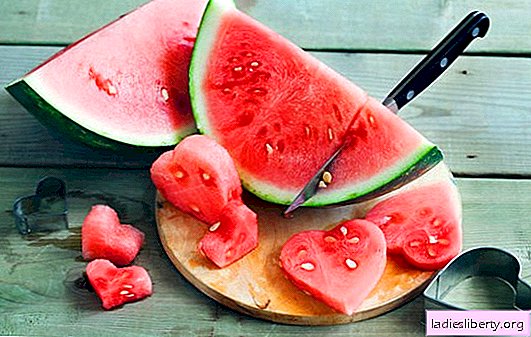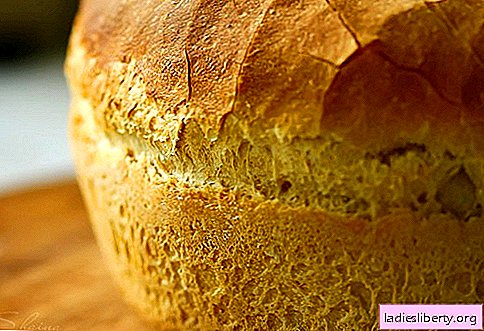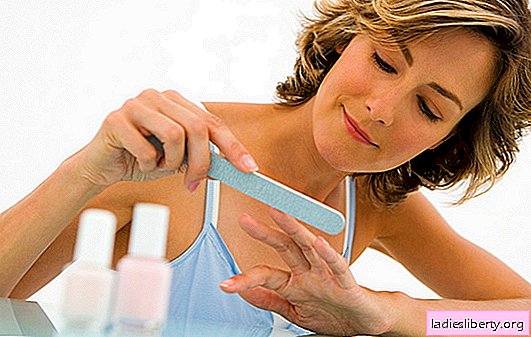
Vitamin E is spoken of as a substance that helps maintain beauty and youth. The secret is in its antioxidant properties.
It’s very useful to eat natural writing that contains vitamin E. What products this miracle substance contains and how much our body needs, let's understand.
Benefits of Vitamin E
In fact, vitamin E is a whole group of substances called scientific tocopherols. The term itself contains an indication of the enormous benefit of the substance: in Latin, “Toko” means “offspring”, and “ferre” means “brings”. It is clear that with a deficiency of this substance, it is problematic to conceive and bear a child. Moreover, tocopherol normally supports reproductive functions of both the female and male body. We will return to this issue.
• In addition, without vitamin E, the normal course of complex biochemical processes is impossible:
• its entry into the body is necessary in order to preserve the strength of nerves, muscle strength, natural protein metabolism;
• resist the destruction of cell membranes under the influence of aggressor cells - free radicals;
• absorb and accumulate fat-soluble vitamins, such as retinol;
• improve cellular respiration due to the assimilation of oxygen by tissues;
• reduce the coagulation rate of the blood, expand small vessels, thin the blood, preventing thrombosis. Scientists have discovered: tocopherol helps to build a new vessel if a blood clot forms in a nearby one;
• neutralize toxins that are formed as a result of the oxidation of lipids (fat cells);
• restore the full-fledged work of such organs as the thyroid gland, adrenal glands and the pituitary gland that are most important for hormonal status
• protect the heart muscle.
If a person receives a sufficient amount of tocopherol with food, then he is in a cheerful mood, differs in endurance, and tolerates physical and mental stress. Athletes take this substance in order to increase muscle mass.
The healing properties of vitamin E
Doctors may prescribe tocopherols for the prevention and treatment of certain diseases or specific conditions. For example, the use of drugs with the following goals is shown:
• increase the number of red blood cells in red blood cells with iron deficiency anemia;
• prevent the development of age-related or radiation-induced cataracts;
• protect blood vessels and heart from pathological changes;
• improve the condition of the dermis with burns, scars;
• improve the oral mucosa;
• prevent breast and prostate cancer;
• facilitate the course of chronic diseases of the pancreas, liver, gall bladder;
• reduce the harm of stress with constant psycho-emotional stress, prevent psychosomatic diseases.
Many diseases in humans occur with age. To prevent this and maintain a state of physiological youth, you need to get vitamin E with food daily. What foods contain this substance and how to keep it - this is the main question for fifty-year-olds.
The Importance of Vitamin E in Pregnancy
However, this issue is no less important for young people planning a pregnancy. Tocopherol deficiency with a high degree of probability will result in pathologies in the development of the fetus, including those incompatible with life. A child can be born mentally disabled, often an abnormal structure of the joints, deformity. In general, expectant parents must eat foods rich in vitamin E, to learn what foods contain tocopherols.
For a future baby, a sufficient intake of a beauty vitamin in the mother’s body is also good because it prevents the occurrence of allergies. Considering how many allergic babies are being born now and how painfully the disease progresses at times, to ensure the tocopherol rate is simply the duty of a pregnant woman.
In obstetric practice, the appointment of tocopherol during gestation is explained by the desire to reduce the likelihood of premature birth or early termination of pregnancy. But the expectant mother herself must eat right. And giving birth to a woman about what foods contain vitamin E will help maintain lactation and feed a healthy, strong baby.
Signs of Vitamin E Deficiency
Scientists recognized twenty milligrams of the substance as the daily norm of tocopherol in the body. If the daily load on a person exceeds the average, then the dose increases to eighty milligrams for every thousand calories eaten during the day.
A fundamentally important point: the human body does not produce it, but needs vitamin E. The only route of entry is nutrition. If it is wrong, it does not take into account how much our body needs tocopherol, then problems arise:
• the monthly cycle in women is disrupted;
• increased risk of miscarriage;
• such important qualities as normal attention, concentration, endurance are reduced;
• a person becomes irritable and physically weak, quickly gets tired;
• vision falls;
• muscles gradually atrophy;
• immunity decreases;
• anemia develops.
The fact that it is time to take seriously and the constant lack of tocopherol, say "senile spots" formed early on the hands and face.
By the way, not only the wrong diet can be to blame for a deficiency of vitamin E. One of the reasons of a different order is a violation of fat absorption, digestive problems. In addition, prolonged exposure to the scorching rays of the sun interferes with the absorption of tocopherol.
What foods contain vitamin E
Obtaining the daily norm of tocopherol can be very simple: eat fifty grams of dried almonds or two tablespoons of sunflower or other vegetable oil. In general, it is the easiest way to get tocopherol from oil, the main thing is not to fry on it, but to season salads or add to porridge. Compare:
• sunflower oil 44 mg;
• rapeseed oil 19 mg;
• corn oil 18.9 mg;
• olive oil 12 mg.
A record amount of tocopherol contains wheat germ oil (215 mg) and sea buckthorn oil (123 mg).
What foods contain vitamin E?
First of all, these are fresh herbs, leafy vegetables and other plant products:
• asparagus (2 mg);
• parsley (1.8 mg);
• corn grains (1.3 mg);
• green onion feathers (1 mg);
• broccoli cabbage (0.78);
• leaf fat (0.7);
• wheat seedlings (0.5 mg);
• green bean pods (0.3 mg);
• cauliflower (0.2 mg);
• white cabbage (0.1 mg).
Tocopherol can be obtained from dandelion leaves (3.4 mg), flax seeds (0.3 mg). A lot of vitamin E in berries and fruits: sea buckthorn (5 mg), rosehip (1.7 mg), apricots and peaches (1.1 mg), black currant (0.7 cm), raspberries (0.6 mg), strawberries and red currants (0.5 mg), cherries (0.3 mg).
Eat nuts - A delicious, nutritious product in which there is also a lot of tocopherol. A huge amount in hazelnuts (20.4 mg) and peanuts (10.1 mg). Cashew contains 5.7 mg, walnuts 2.6 mg. But the highest percentage of tocopherol in sunflower seeds is 31.2 mg, which is almost two times the daily norm.
Cereals also rich in tocopherol:
• wheat 3 mg;
• rye 2.8 mg;
• oats 1.4 mg;
• barley 1.1 mg;
• brown rice 0.82 mg;
• buckwheat 0.8 mg.
In dairy and meat products, eggs, the content of tocopherol is insignificant. In milk it is not at all. But the offal contains about 0.9 mg of vitamin E.
When cooking, frying, it is completely destroyed. Therefore, in fact, it is impossible to get a dose of vitamin E from cereals. Therefore, you need to eat raw vegetables, berries, fruits, oils. The only way to keep up to 90% of vitamin E is by steaming.











